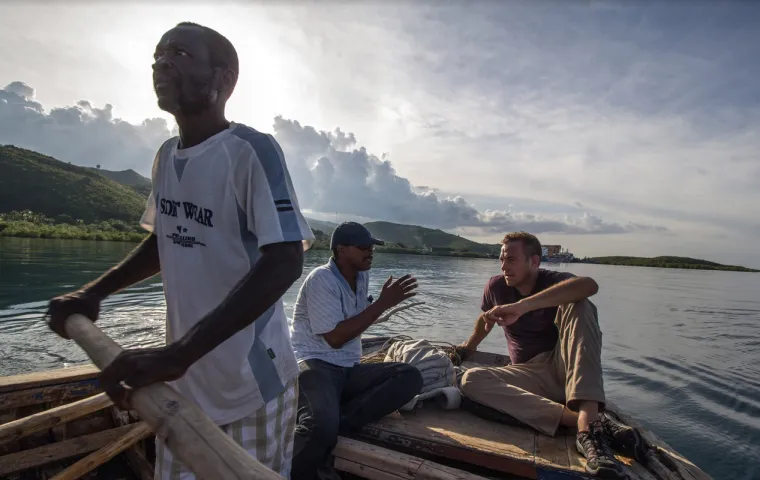
Ian Urbina talks about lawlessness at sea, shadowing the work of “repo men” – men who are hired to help steal, take back, or repossess ships on behalf of banks, mortgage lenders, insurers – and how some of the best stories are hiding in plain sight.
“Don’t be afraid to work on a story for a couple of years before you even tell editors about the idea.”
Ian is an investigative journalist and director of The Outlaw Ocean Project, a non-profit journalism organization chronicling lawlessness on the high seas. To stay up-to-date on his reporting, consider subscribing to the newsletter here.
What were the major findings of your story?
Thousands of boats are stolen each year and some are recovered using alcohol, prostitutes, witch doctors and other forms of guile.
What impact did your story have?
Broadened awareness of maritime crime and the cast of gritty characters who operate offshore.
Was your story based on another publication?
The New York Times, Maritime ‘Repo Men’: A last resort for stolen ships, December 29, 2015. [Original story]
Did you receive any funding to do this story?
No.
How did the story start and how did your team decide on the first steps to take in working on this story?
In the midst of a 2-year investigative reporting effort about lawlessness at sea, part of The Outlaw Ocean series, I repeatedly heard about a specialized type of troubleshooter who on behalf of banks, mortgage lenders, insurers or ship owners helped to steal, take back, or repossess ships. So I set out to find these types of operators and to chronicle the work they do.
How long did it take to report, write and edit this story?
3 months.
What challenges did your team face while working with sources?
The reporting on Martime Repo Man happened first for the story in the newspaper and a year later for a chapter in the book. The foremost challenges were convincing repo men to allow me to shadow them during their missions because the work is somewhat extra-illegal. There was also risk from law enforcement officers or other disgruntled parties.
What resources and tools did your team find useful?
To estimate the frequency of ship thievery, I consulted the United States Coast Guard Investigation Services. To understand the process of making or revealing fake documents, I consulted a private database run by Tryg-Mat Tracking. To chronicle the tactics used, I interviewed nearly a dozen repo men from around the world about their experiences. To monitor specific stolen ships, I used data from AIS, VMS, and online marine traffic tools.
What other challenges or barriers did your team face while working on the story or series and how did you overcome these challenges?
Bed bugs in Haiti, a drunken Cessna pilot who fell asleep at the wheel airborne over the coast of Jamaica, thuggish mafia-type ship owners in Greece, a diabetic translator experiencing insulin-crash while stuck in a boat off the coast of Greece and a proclivity among repo men to embellish their own stories. These are some of the challenges of reporting the story.
What advice would you give journalists working on similar investigations?
Some of the best curiosities are hiding in plain sight. If it can be imagined it probably exists. Don’t be afraid to work on a story for a couple of years before you even tell editors about the idea.
Did your team face any pushback during or after the publication of this story?
No, the difficulty after the story was not pushback, but rather an overflow of an interest from insurers, law enforcement, P&I clubs wanting to get advice on tactics for managing these problems that few before had been willing to discuss openly.
Did working on this story change your perspective as a journalist?
Perhaps it reinforced the anthropological sense that crime as a journalistic lens allows for interesting and narrative storytelling, as well as a different sort of window into hidden worlds.

